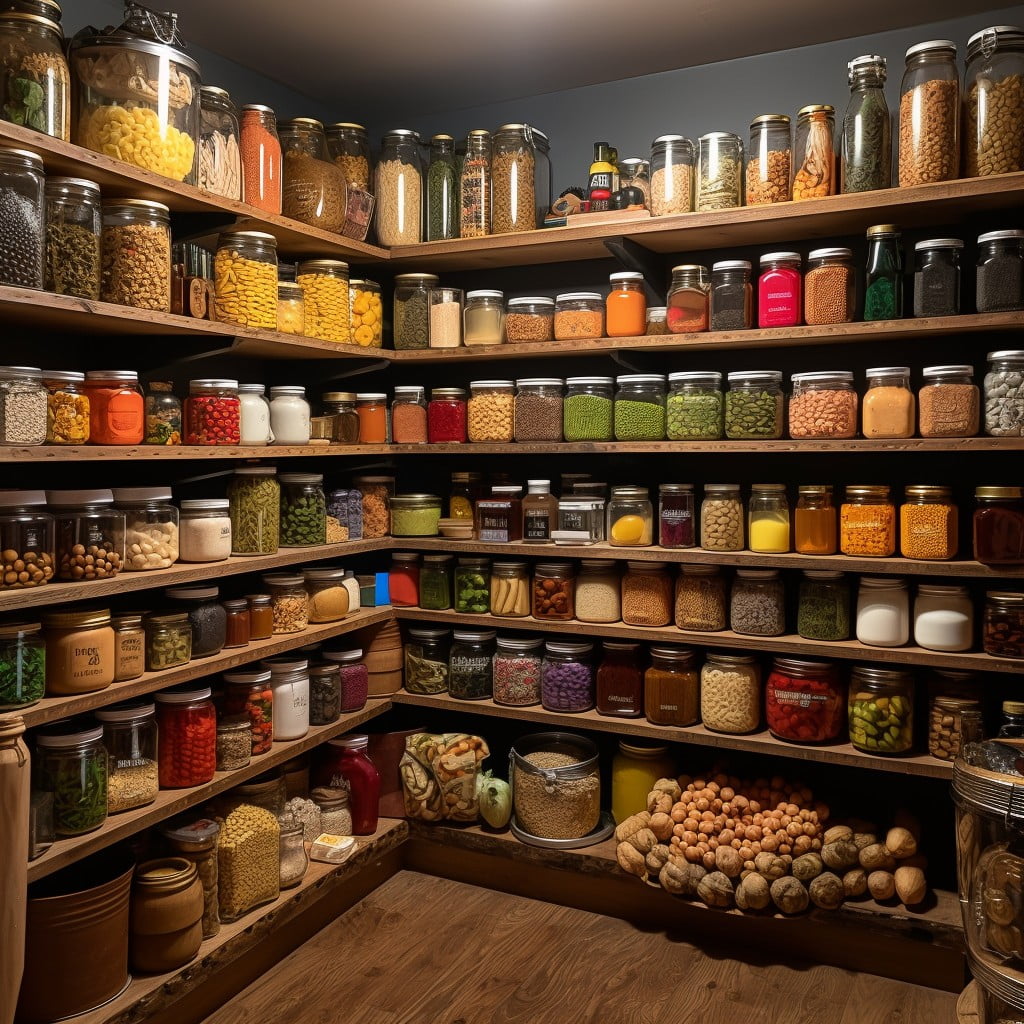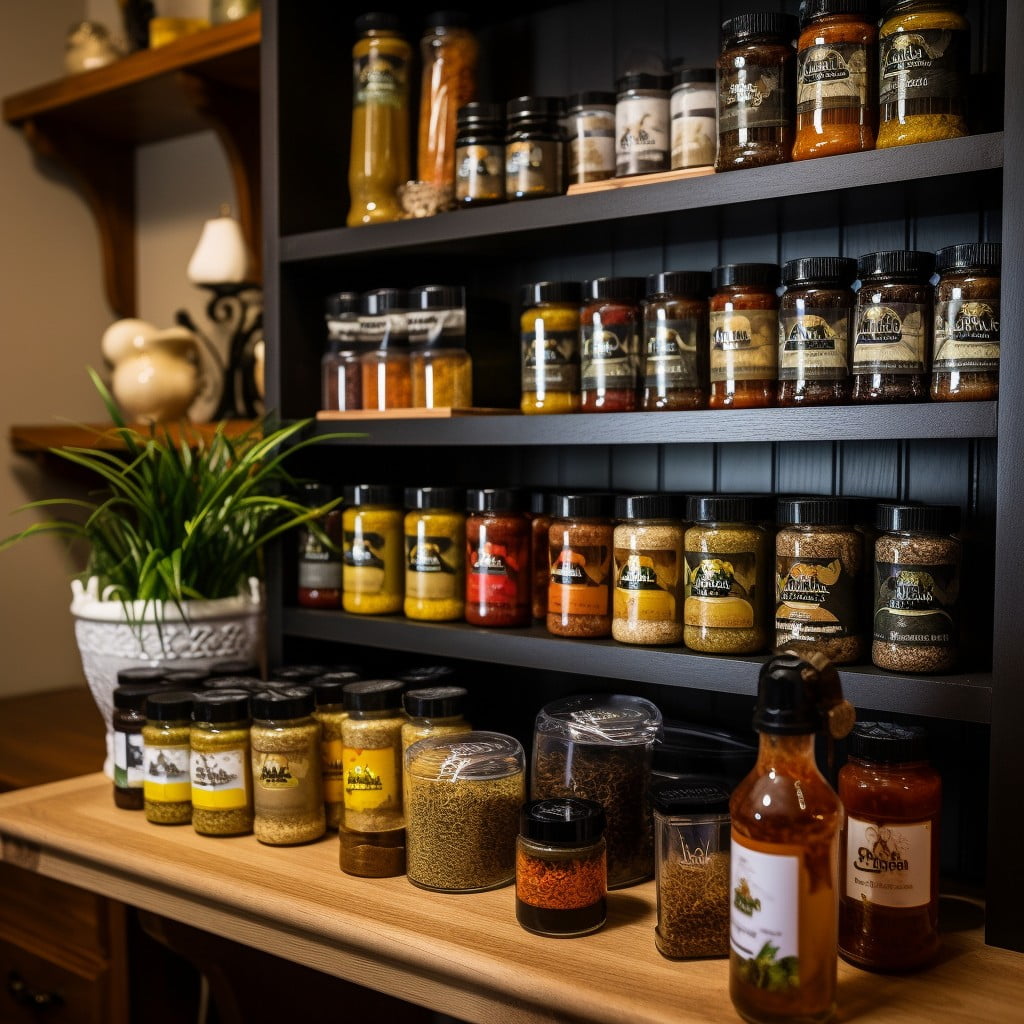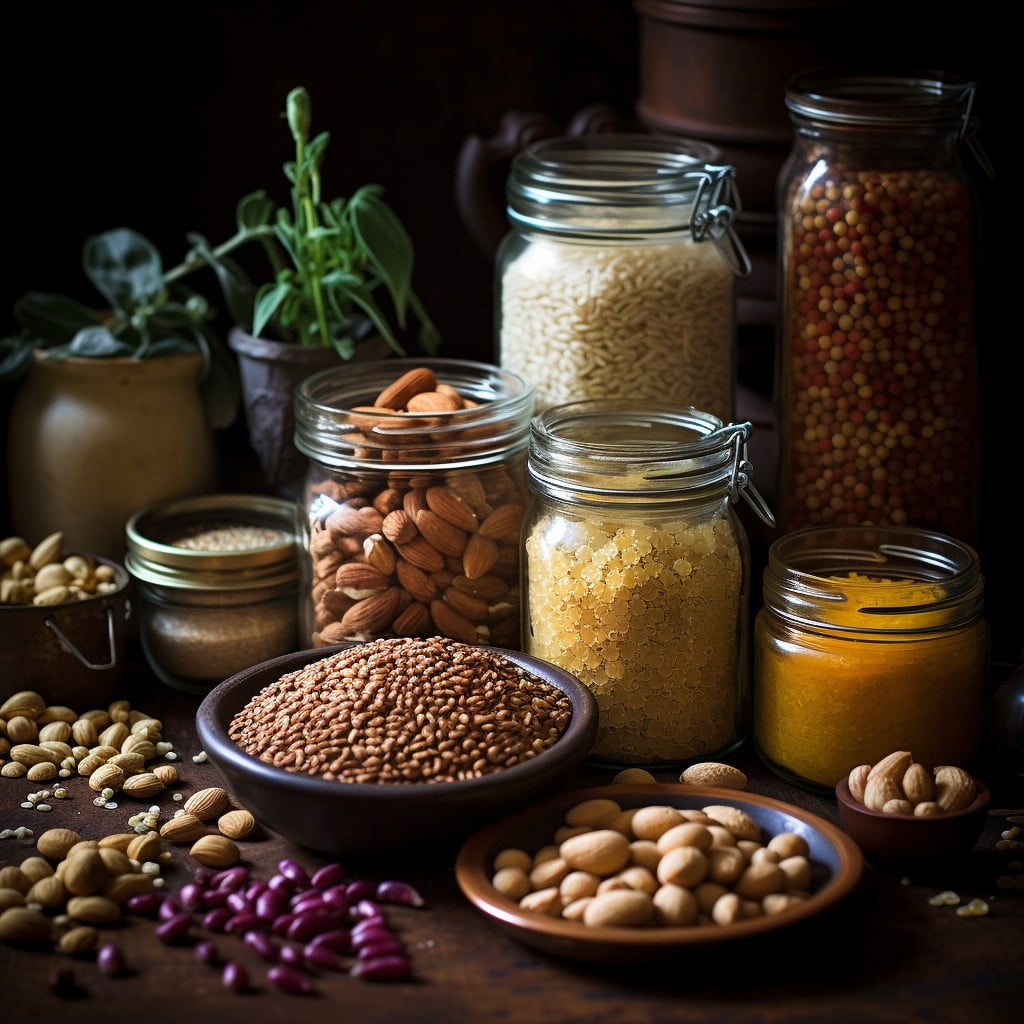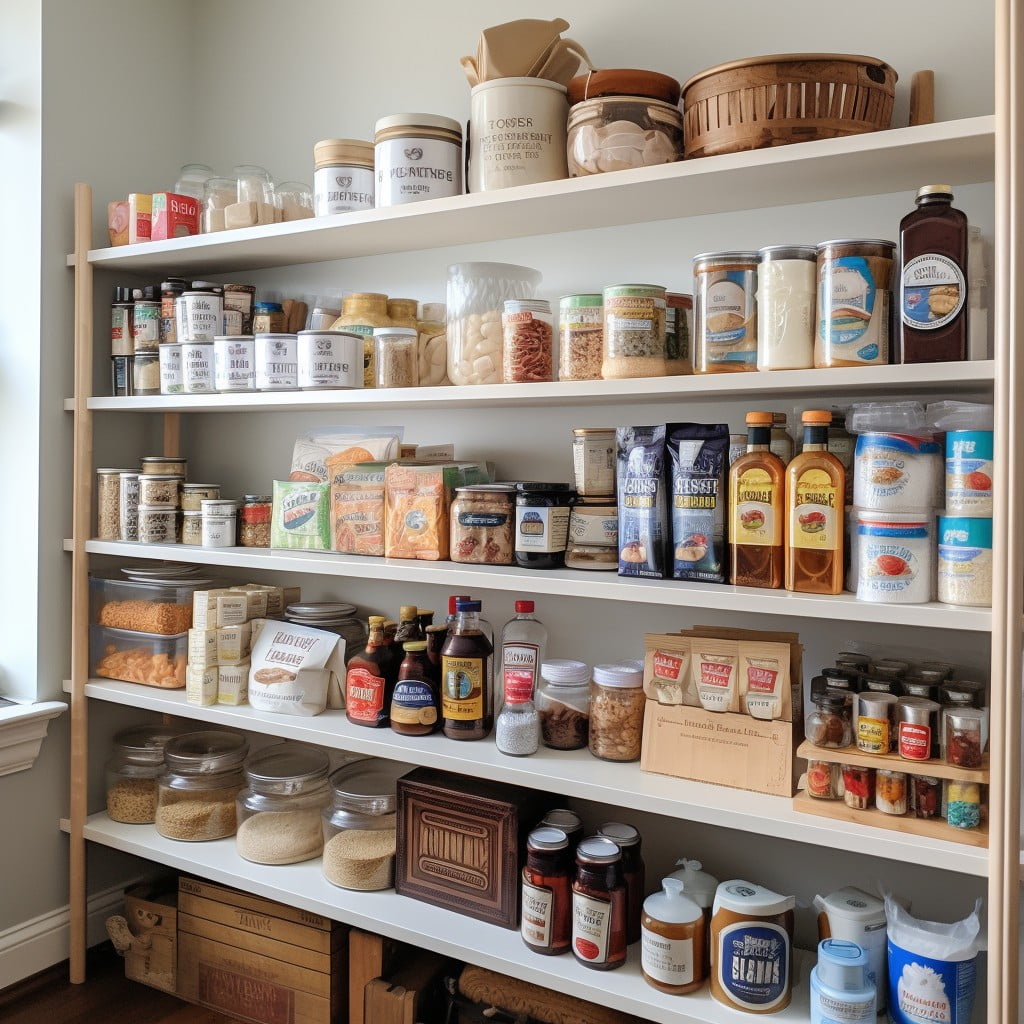Last updated on
This article will guide you through the process of stocking your pantry efficiently with essential items to last for an entire year.
Stocking a pantry for a year requires careful planning and a strategic approach. This involves selecting non-perishable foods, considering nutritional balance, maintaining variety, and ensuring proper storage. By focusing on these key aspects, you can build a pantry that will sustain you and your family for an entire year.
In this article, we delve into each of these elements in detail, providing comprehensive guidelines on quantities, types of food, storage tips, and how to keep your pantry organized for easy access and rotation. Stay tuned for a complete solution on how to effectively stock your pantry for a year.
Key takeaways:
- Canned goods, rice, pasta, and dry beans for long-term storage.
- Consider nutritional balance and variety in pantry items.
- Proper storage and organization are key for preserving food quality.
- Durable condiments and spices can last for a year.
- Cost-effective advantage, emergency preparedness, and convenience are benefits of a well-stocked pantry.
Essential Foods That Will Keep for a Year

Canned goods, such as vegetables, fruits, and soups, excel for long-term storage, often maintaining their quality for up to two years. Basic items like rice, pasta, and dry beans also have substantial shelf life, providing carbohydrates and proteins. You’d want to consider whole grains as well, like oats and quinoa, for their increased nutritional value.
Another category to include is long-lasting proteins. Consider canned meats, jerky, or protein powders. Don’t forget canned or powdered milk for a dairy source.
In the realm of sweeteners, items like honey and sugar can virtually last forever, when properly sealed. Additionally, nuts and seeds, either in their natural state or as butters, provide healthy fats and proteins. Lastly, oils such as coconut or olive oil are crucial, having long shelf lives and broad usage in cooking and baking.
Choosing Durable Condiments and Spices for the Pantry

Condiments and spices not only enrich meals but also keep well if chosen correctly. When stocking, go for those with a shelf-life of at least a year.
Whole spices, as opposed to grounded ones, maintain flavor longer. Examples are peppercorns, nutmeg, and cinnamon sticks.
Condiments like soy sauce, vinegar, and mustard typically last unopened in the pantry for a year. Honey and pure maple syrup, due to their low water content, can be preserved indefinitely but it’s good to use within a year for optimal taste.
Dried herbs, including basil, oregano, and rosemary, can retain flavor for a year. However, store them in airtight containers away from light and heat to prevent loss of quality.
Salt does not spoil but can clump when exposed to moisture. Hence, airtight storage is recommended.
Remember, buying in bulk for long-term storage is cost-effective, but never compromise quality for quantity. Poor quality spices or condiments could ruin a dish. Ensure the condiments you use are essential to your cooking and fit your taste preference.
Selecting Pantry Staples: Grains, Beans, and Nuts

Whole grains such as wheat, brown rice, oats, and quinoa, feature impressive shelf lives of around a year when stored properly. These staples boast significant nutritional values and pair well with many types of recipes. For instance, quinoa is a complete protein and complex carbohydrate that serves as a versatile base for numerous dishes.
Protein-packed beans and lentils, either canned or dried, are another essential attribute to a well-rounded pantry, lasting up to two to three years. By including varieties like black, pinto, garbanzo, and kidney beans, one can greatly increase the diversity of meal options.
Nuts, specifically raw ones, offer a wealth of healthy fats and proteins. Almonds, walnuts, and pecans lend themselves well to snacks and dishes alike. However, please note, nuts generally have a shorter shelf life due to their oil content, which can become rancid over time. It’s recommended to check with the supplier on how to best store these items, but typically, these can last up to a year if kept in a cool, dark location or refrigerated.
Key points:
- Whole grains: Nutrient-rich and versatile.
- Beans and lentils: Greater meal diversity and plenty of protein.
- Raw nuts: Source of healthy fats and protein.
- Proper storage: Lengthen shelf life and preserve taste and nutrition.
In this way, grains, beans, and nuts contribute substantially to maintaining a stocked pantry capable of sustaining a household for a full year. With a proper understanding of each food’s longevity and correct storage techniques, you’re well on your way to having a nutritious, varied, and long-lasting pantry.
Important Baking Supplies for a Year’s Worth Pantry

For at-home baking, the right mix of supplies can keep the oven warm and the aroma of fresh pastries wafting through the air, all year round.
1. Flour: Pick from all-purpose, whole wheat, or gluten-free, based on preference and dietary needs.
2. Sugar: Stock up on granulated sugar, brown sugar, and powdered sugar for a variety of recipes.
3. Baking Soda and Baking Powder: Essential leavening agents for making baked goods rise.
4. Yeast: Necessary for baking bread; consider both quick-rise and active dry versions.
5. Vanilla Extract: A common flavoring in baked goods.
6. Cocoa Powder: Provides rich, chocolaty flavor to desserts and baked foods.
7. Cornstarch: Useful for thickening sauces and creating a light texture in baked goods.
8. Salt: Enhances flavors and interacts with yeast during fermentation.
Remember, all these essentials have a long shelf life, but proper storage is key. Keep them in a cool, dry place and seal containers tightly after use. Finally, keep an eye on the expiration dates to ensure peak flavor and effectiveness.
Understanding Long-Term Food Storage
Firstly, humidity and temperature play significant roles in determining how well food preserves in the pantry. Ideal humidity is between 10% to 15%, while a constant temperature of 50 to 60 degrees Fahrenheit is optimal.
Second, the proper method of storage is crucial. Sealed containers or vacuum-sealed packages prevent moisture and pests from spoiling the food. Heavy-duty aluminum foil can also be a useful lining option.
Lastly, food value degrades over time, but the pace varies depending on the food group. For instance, canned goods usually offer a two-to-five-year preservation window, whereas dried, sealed foods, like beans and pasta, can last up to a year or more.
Part of long-term storage knowledge is recognizing when food is no longer good for use. Always trust your senses: avoid foods with odd smells, change in color, or inflated cans as these are clear signs of spoilage. Always rotate your stocks, using the older items first to ensure freshness.
How To Determine Foods You Shouldn’t Consume After Expiration
Check the expiration dates. Expiry dates are there for a reason, primarily to ensure food safety. Typically, dry goods such as grains or pasta can last beyond these dates, but canned goods and perishable items may become unsafe.
Visual inspection is crucial. Spoiled food often has changes in color or texture or may develop mold. A quick visual examination helps to avoid unsafe food consumption.
Smell the food. If food emits an off or foul odor, it’s likely no longer safe to eat. Don’t ignore your sense of smell as it is one of the most reliable indicators of food spoilage.
Sealed cans and bottles exhibiting bulging, leaking, rusting, or significant denting should be discarded. These signs can mean that harmful bacteria have multiplied inside.
Listen to the sound a canned food makes when you open it. A sudden loud pop signifies pressure inside the can, hinting at a possible issue.
Rely on taste last. If something doesn’t taste right, don’t risk it. Immediately stop consuming it.
Remember that even with non-perishable items, food storage conditions greatly influence both their safety and quality. High temperatures, humidity, or pest infestation can all negatively affect the food’s shelf life.
The Benefits of Having the Pantry Stocked for a Year
1. Economical Advantage: Buying in bulk often leads to cost savings since per-unit prices are usually lower for larger quantities. Additionally, having a well-stocked pantry allows you to avoid frequent trips to the grocery store, reducing both travel expense and time spent shopping.
2. Emergency Preparedness: Whether a natural disaster or a personal crisis, shelf-stable foods can provide necessary sustenance when fresh produce or regular grocery trips are not feasible.
3. Convenience: With a yearly pantry, meal planning becomes straightforward. You always have a variety of ingredients readily available, enabling you to prepare a diverse range of meals without needing to shop frequently.
4. Health Benefits: By choosing high-quality canned goods and reducing last-minute take-away meals, you control sodium, sugar, and preservatives intake.
5. Reduction in Food Wastage: Proper storage and routine pantry rotation lessen the probability of food spoilage leading to less waste.
Process of Organizing and Rotating the Pantry
To ensure longevity and maintain the quality of pantry items, it’s crucial to create a system. This system will not only keep the pantry tidy but will also prevent food spoilage.
1. Start by grouping similar food items – keep canned goods together, baking items in another section, and so on.
2. Position items with an approaching expiration date at the front, making them easily accessible to use first.
3. Replenish stock at the back, while using those up front. This methodology, known as “FIFO” (First In, First Out), is a classic inventory strategy often used in groceries and restaurants.
4. Regularly assessing the pantry, say once a month, can lead to spotting any misplaced items or those nearing expiry.
5. Ensure proper storage methods. Many dried goods like pasta and rice last longer when stored in airtight containers.
6. Always record the purchase and expiry dates for each item. This will help ensure that all the items in the pantry are used before they go bad.
FAQ
What food lasts 1 year?
High-acid canned goods like juices, fruit, pickles, sauerkraut, tomato soup, foods in vinegar-based sauces, and unopened olive oil can last up to a year.
What should I stock up in my pantry?
You should primarily stock up on baking essentials such as baking powder, baking soda, vanilla extract, different sugars, and chocolate chips, also include spices like cinnamon and cayenne, condiments like hot sauce, and bulk pantry items like peanut butter, pasta, pasta sauce, and tomato paste.
How can one best manage rotation and expiration dates of pantry items?
To best manage rotation and expiration dates of pantry items, organize them using the "first in, first out" method and routinely check labels for expiration dates.
What are some cost-effective strategies for building a yearly pantry stockpile?
Strategies for building a cost-effective yearly pantry stockpile include buying non-perishables in bulk during sales, preserving seasonal produce, utilizing coupons, shopping at discount stores, and planning meals based on what’s in the stockpile to reduce waste.
How much storage space is typically required for a year’s supply of pantry staples?
Typically, a year’s supply of pantry staples requires approximately 25 to 30 cubic feet of storage space.
Recap:




